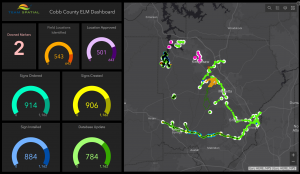Infrastructure Siting
Team Spatial developed the Team Choice © web app to empower infrastructure developers with advanced analytical tools for group decision making. Team Spatial fully supports the site and provides consulting services in support of infrastructure development programs and projects. Learn more at www.TeamChoice.com.
Additionally, Team Spatial consultants provide a wide range of services described below.
Team Spatial helps infrastructure developers (eg. electric transmission lines, etc) identify prime sites and routes for new infrastructure development. Related services include:
- Siting model development: Team Spatial facilitates internal and external stakeholder input workshops to develop suitability models that can be used on a programmatic basis for multiple projects throughout a territory. This starts with using models from other regions and refining the models with local considerations. Team Spatial consultants have led the development of state/provincial siting models in: Manitoba, Alberta, Georgia, Kentucky, and more. In addition to the development of external stakeholder (regulators, NGOs, etc.) models, Team Spatial consultants have led numerous companies in developing internal siting models including Georgia Power Company, Exelon Power Generation, Oglethorpe Power Corporation, Pepco Holdings, Inc., Georgia Transmission Corporation, Kentucky Utilities, Big Rivers Electric Corporation, East Kentucky Power Cooperative, Manitoba Hydro and more. This process involves facilitating workshops to model input from internal experts from engineering, environmental, public relations, real estate, and others. The model development is typically described in a report like this one. One state legislative research committee called the EPRI-GTC Transmission Line Siting Methodology (Team Spatial consultants being co-developers) the “…best known method…”.
- Implementation of siting projects. Team Spatial consultants work with project teams who plan, permit and construct infrastructure. Team Spatial can provides all or some of the following services.
• Data development
• Alternate Corridor Development
• Identification of Alternate sites/routes
• Alternate site/route evaluation
• Site/route selection
• Siting report generation
• Expert testimony






